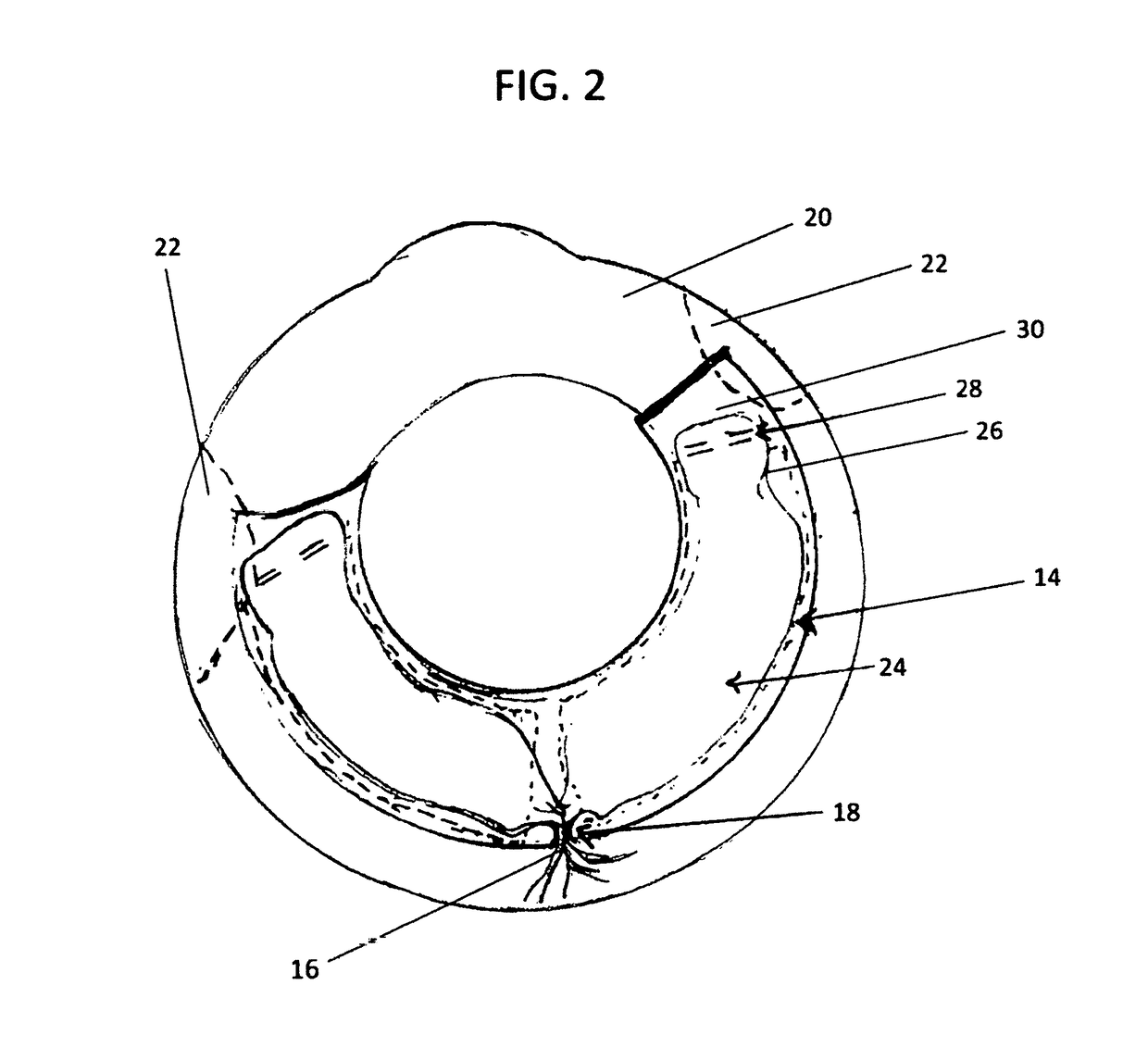Wearable treatment substance dispenser
a dispenser and treatment substance technology, applied in the field of wearable treatment substance dispensers, can solve the problems of not having a healthcare provider's accountability or reinforcement device, tens of billions of dollars yearly in preventable healthcare costs and early deaths, and the convenience of containers and dispensers is not guaranteed. , to achieve the effect of increasing the number of patients, easy to lose or forget, and easy to trea
- Summary
- Abstract
- Description
- Claims
- Application Information
AI Technical Summary
Benefits of technology
Problems solved by technology
Method used
Image
Examples
Embodiment Construction
[0016]FIG. 1 illustrates an embodiment of the wearable treatment device 10. A strap 20 allows this embodiment to be worn on the wrist. A treatment substance dispenser 12 is shown with conjoined cartridges 14, a nozzle 16, and a backflow ring 18. In a typical use of the invention, a person would attach the strap 20 to his or her wrist with the nozzle 16 generally directed towards the palm of the hand. It is understood that the treatment substance dispenser 12 can apply many forms of substances including but not limited to liquids, aerosols, pastes, creams, and solids such as but not limited to pills, capsules, and powders. It is also understood that the nozzle 16 may be configured to, upon actuation of two portions of the straps (shown as two buttons 22 in FIG. 1), dispense, release, or otherwise provide output for a treatment substance in any of these forms. In certain embodiments, the nozzle 16 will be attached to a cartridge (or to conjoined cartridges 14 as in FIG. 1) containing ...
PUM
 Login to View More
Login to View More Abstract
Description
Claims
Application Information
 Login to View More
Login to View More - R&D
- Intellectual Property
- Life Sciences
- Materials
- Tech Scout
- Unparalleled Data Quality
- Higher Quality Content
- 60% Fewer Hallucinations
Browse by: Latest US Patents, China's latest patents, Technical Efficacy Thesaurus, Application Domain, Technology Topic, Popular Technical Reports.
© 2025 PatSnap. All rights reserved.Legal|Privacy policy|Modern Slavery Act Transparency Statement|Sitemap|About US| Contact US: help@patsnap.com



